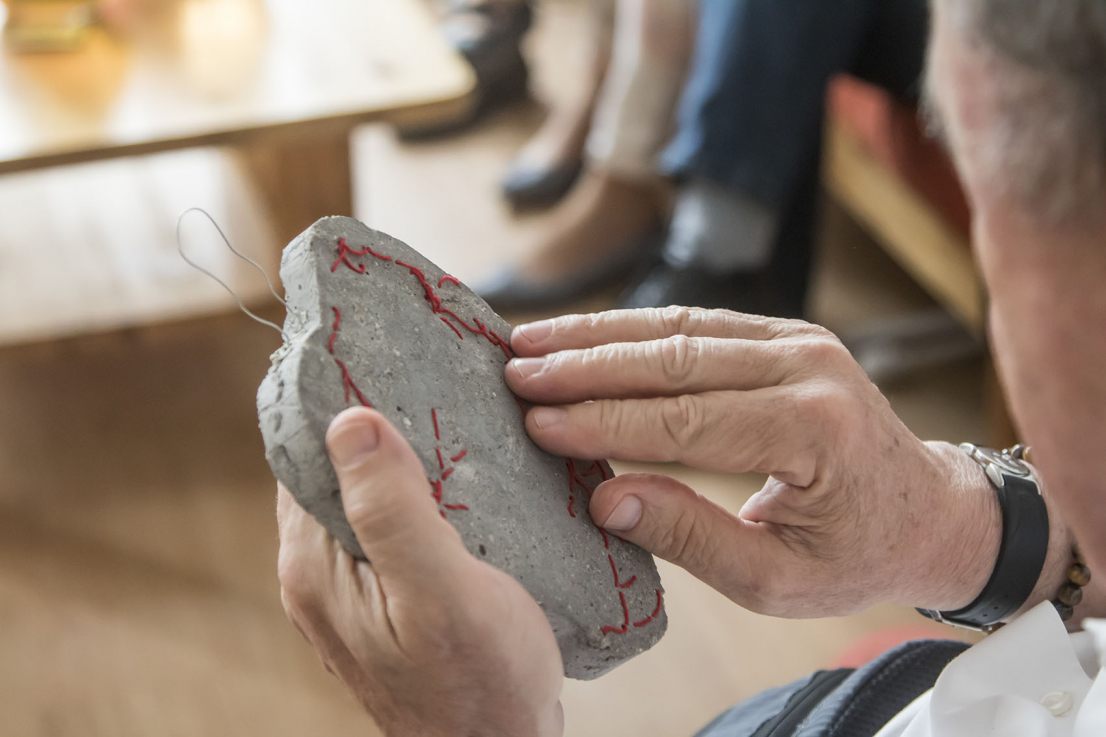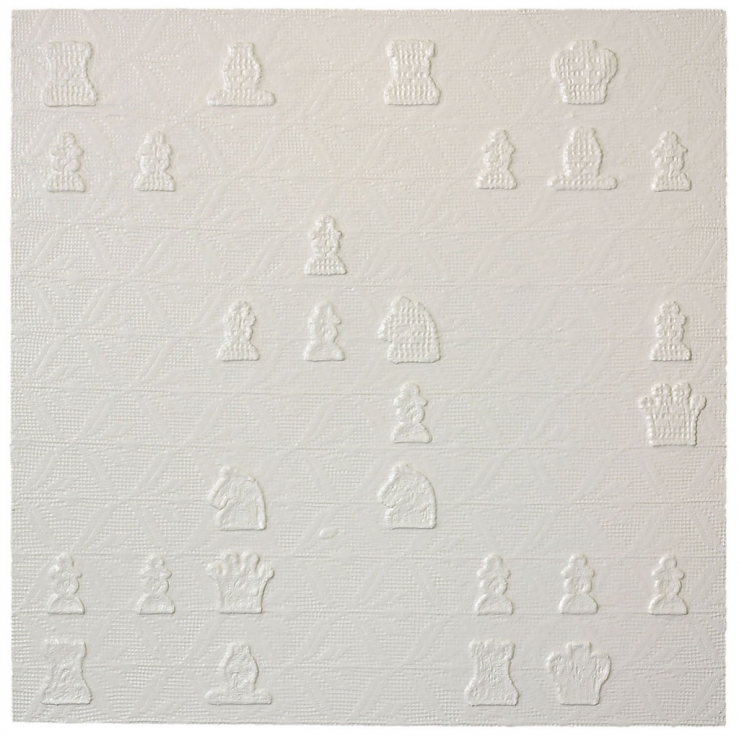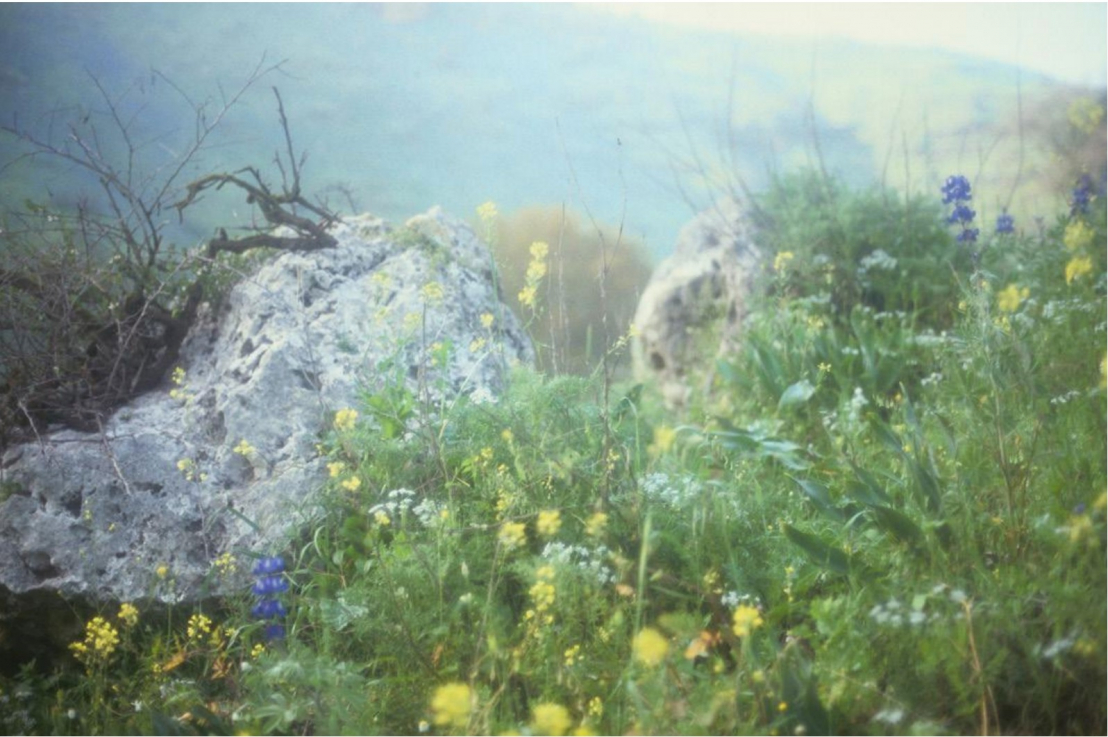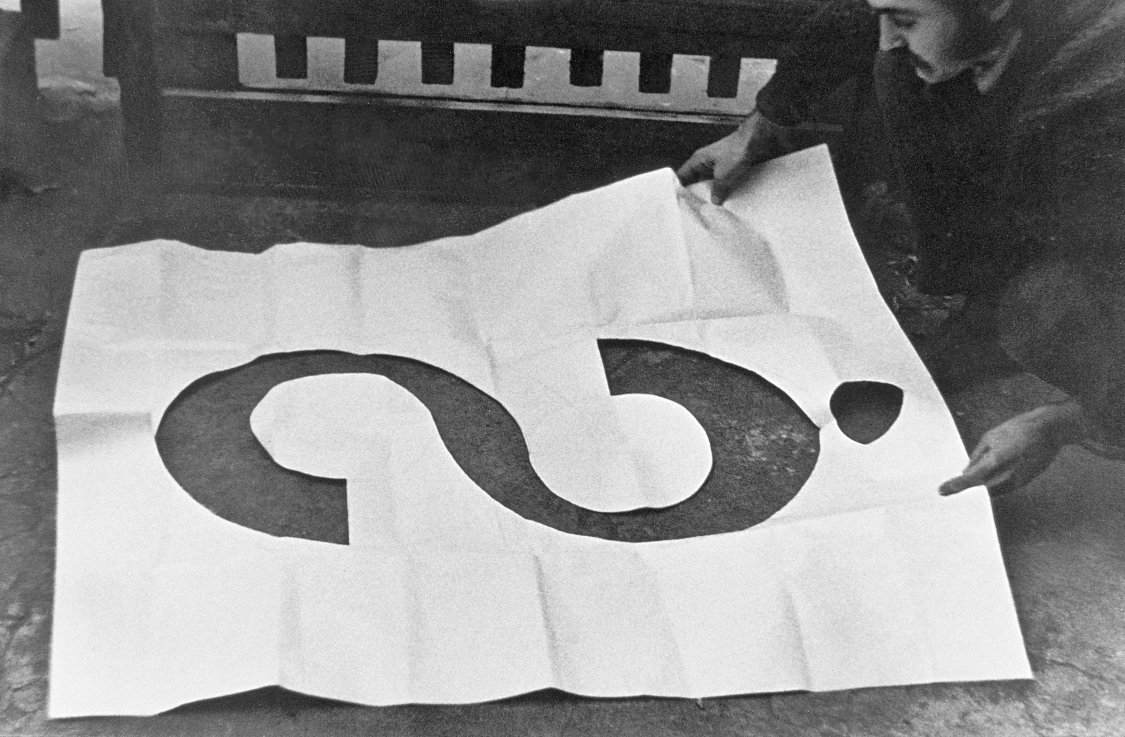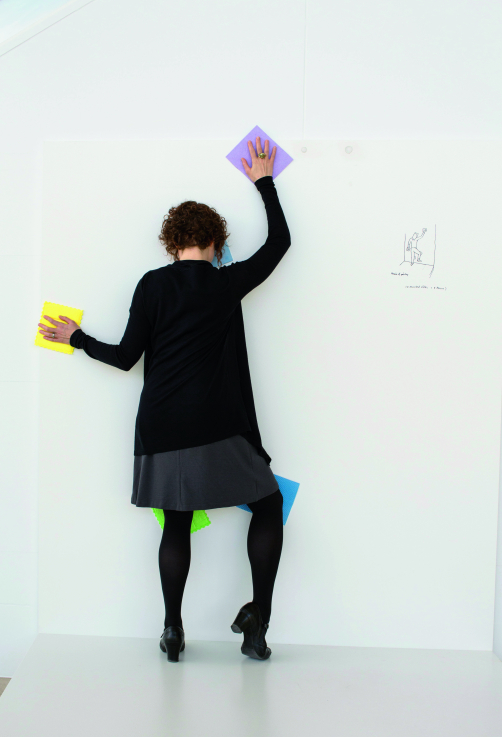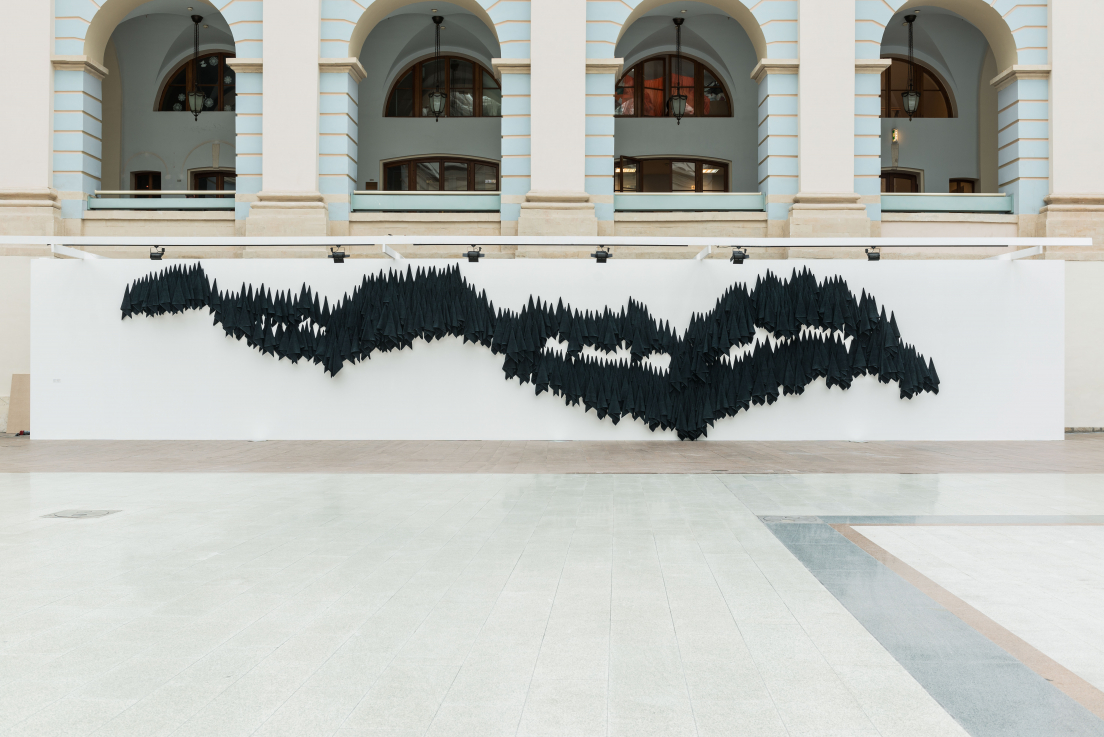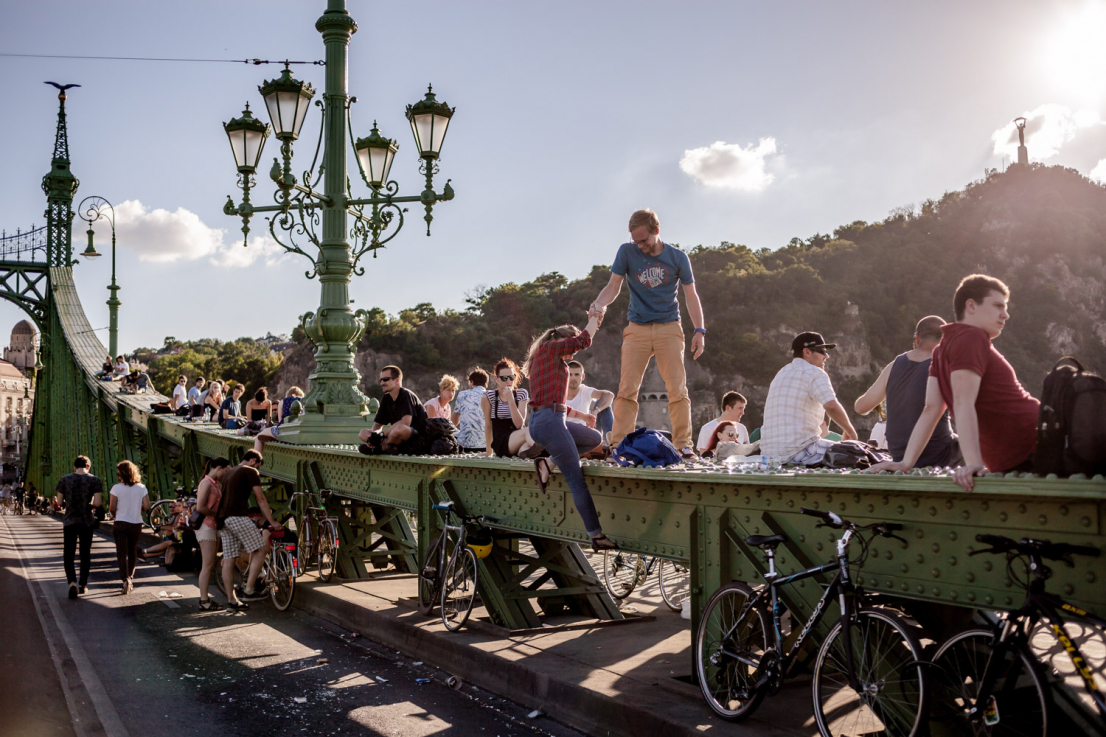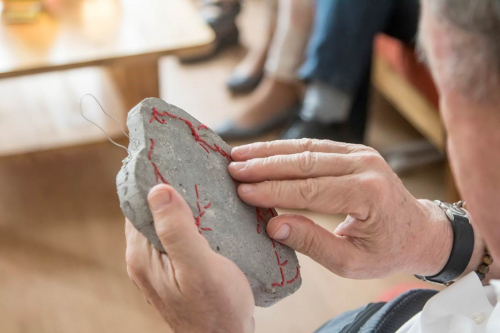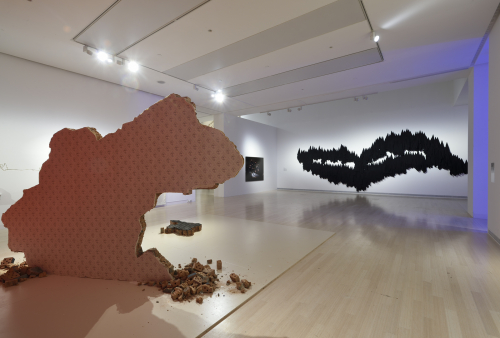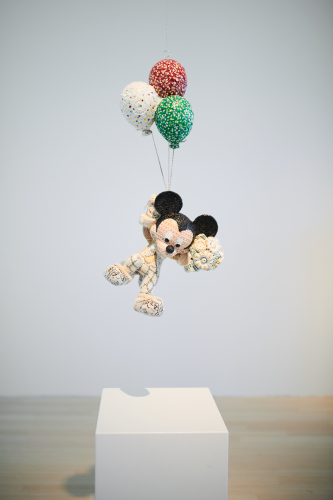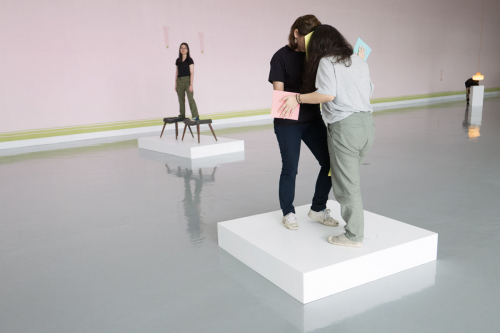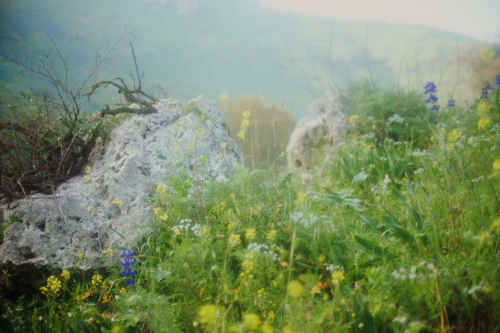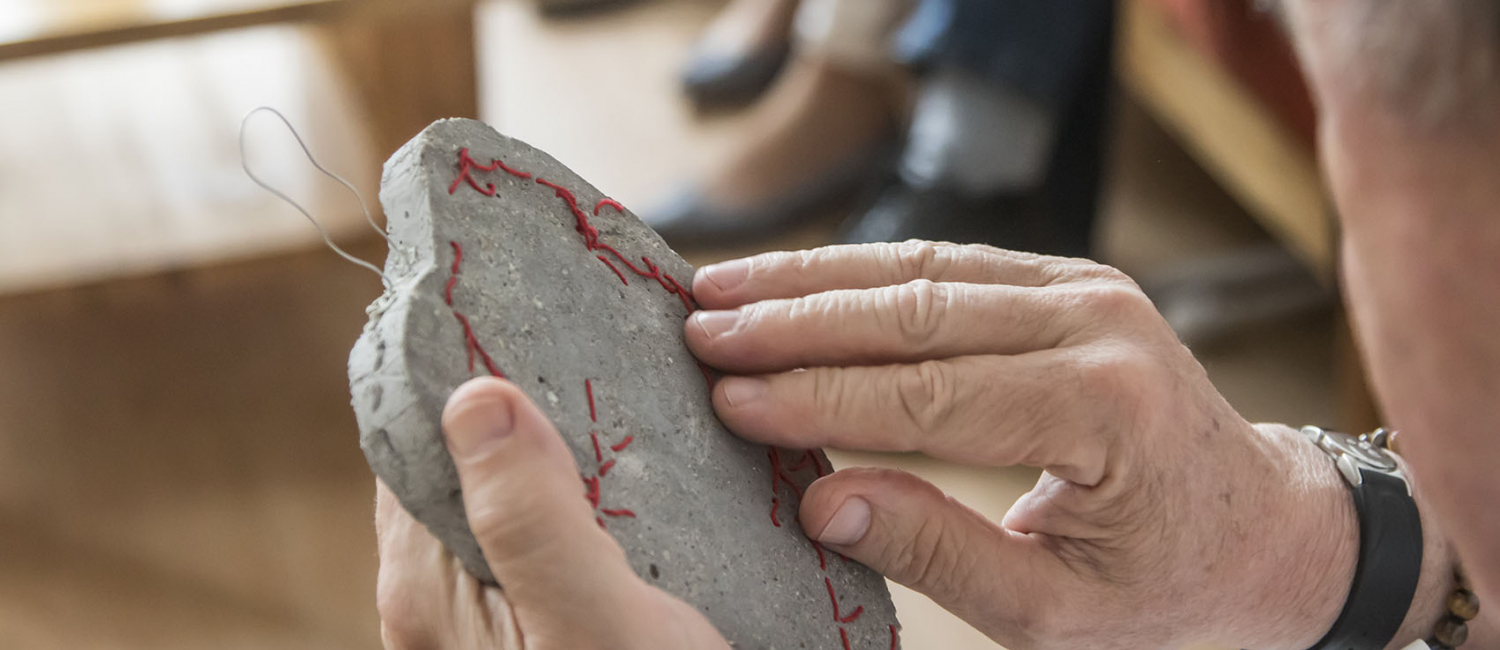COMMON AFFAIRS
Collaborative Art Projects
30 January – 18 March 2018
The exhibition presents the results of a four-year international program (CAPP – Collaborative Arts Partnership Programme) that was aimed at sharing collaborative art practices with artists and supporting projects involving various communities that seek effective solutions to a particular social problem.
The artists, selected by open-call and their partners carried out seven projects at several locations in Budapest and in the countryside in 2017. The artists worked together with various communities, including marginalized people or groups with specific problems such as pupils in Budapest and Pécs, young people with intellectual disabilities, people with visual impairments, inhabitants of small villages, agricultural entrepreneurs, and Romanies living in a disadvantaged area.
The aim of the projects was to strengthen the social role of the artists and to improve the participants’ quality of life. Participants involved in the creative process sought to solve social problems through their own creativity, experiencing the community's supportive power in the joint work.
The exhibition presents the achievements of the seven collaborative projects through texts, photos, films and artworks. The exhibition also focuses on displaying the processes and participants’ reflections on social issues, the role of communities and the artists’ position throughout the work.
Rafael Y. Herman
2018. February 16 - April 1.
The exhibition presents recent works by Rafael Yossef Herman known for creating his work with the hidden existence of the night’s darkness. By observing this large scale photographic installation, the Israel-born artist’s representation of the nocturnal world may look like daylight to the viewer. Encapsulating imperceivable or imaginary realities Herman examines the limits of surreality and timeless reality. In a sense he is researching virtuality.
Virtual realities, games, simulations that are so influential to the present let us seek into areas unknown to the human eye. The night landscapes shot by Herman do not exist for our eyes. These strange lights of the night normally can only be perceived by technology.
Compared to the experience of the real daylight, we perceive odd shadows, moonlight features, colour spectrum and shimmering details that differ from sunlight. Rafael Y. Herman strives to create a new reality out of the mystery of the night. He highlights the fact that although the night landscape is close to us, its reality does not exist for the observer. These sites never existed for the human eye, just snapshots, insights into another reality. Curator: Attila Nemes
Permanent Revolution. Ukrainian Art Today
5 April – 24 June 2018
The first major presentation of the Ukrainian contemporary art scene in Hungary is a special occasion to look into the vibrant art of a country full of tensions, which is still largely in the blind spot of the European cultural area. Ukraine, which has become independent for nearly thirty years, struggled with the phenomenon of oligarchic capitalism, is beyond three waves of mass demonstrations, two revolutions, and the annexation of the Crimea, and at present, a war is going on in the eastern part of the country – all this is a consequence of a neurotic and delayed “de-communizing”.
Since the 1980s, a new Ukrainian art has emerged, which radically broke away from Socialist Realism to follow the international cultural processes. The artist generation of the late 1980s and early 1990s is the most significant phenomenon since the Avant-garde of the early 20th century, which Stalin’s regime completely eliminated in the 1930s. The post-Soviet search for identity in the 1990s and early 2000s was gradually replaced by the need to reconsider political art, the importance of understanding social processes and the growing interest in activism came to the fore. All this coincided with a technological and global change that resulted in the rise of a new generation of artists who seek a new meaning, audience, and purpose.
The exhibition “Permanent Revolution” aims at exploring today's Ukrainian art in a historic moment when people are building “aesthetic” and “conceptual” barricades in the main square of the country; barricades, which might make the most prominent activist artists envy. The exhibition presents nearly forty artists of different generations.
A Retrospective Exhibition of Péter Türk (1943-2015)
20 April – 24 June 2018
Péter Türk created outstanding works of international quality at every stage of his consistent and coherent oeuvre characterized by a conceptual orientation. His oeuvre, which has always been widely appreciated by the Hungarian art scene, but yet not researched and known only in narrow circles, is presented in its diversity to the general public for the first time, in the form of a retrospective exhibition and a catalogue.
Péter Türk's oeuvre is characterized by systems thinking, a simultaneous creation of structures and series. He unfolds seemingly everyday subjects into a richness of thought through his limited means of expression.
His early works were influenced by lyrical abstraction, then he made minimalist geometric paintings and reliefs. From the early seventies, he created works in the spirit of conceptual art. Photography as a medium and the experimentation with its various technical forms, which were often his own inventions, became his main concern from the mid-seventies for many decades.
As a result of an unexpected, decisive encounter with God he became a believer in 1989. Subsequently, he placed his work on a new basis: he began to interpret the analysis of vision and reality, as well as the position of the artist from the perspective of faith. Faith remained an attitude of open-mindedness and receptiveness in his works until the end of his life. His position was concealed in symbolic, metaphorical forms at first sight, manifesting itself as a gentle but important option, an intellectual proposition without proselytization.
The exhibition – where many of his works will be presented for the first time – will certainly be a revelatory experience for both the art scene and the general public.
Erwin Wurm One Minute Sculptures and Other Works
6 July – 23 September 2018
“Deception engenders creative emotions.”
How does an object, especially an article, become a statue? How does a huge cardboard box become an overcoat, and what is the viewer’s role in the process of becoming a statue? World-renowned Austrian artist Erwin Wurm seeks answers to such questions having queried the genre of sculpture for about a quarter of a century.
His “One Minute Sculptures” are based upon our most casual items: slightly transformed garments, furniture, home accessories, or just a means of transport, which are presented by drawings characteristic of “user guides”. As black lines, they prompt the viewer to act, who, at the time of the act of participation, becomes a creator and actor, and, if only for a moment, an artwork.
His works do not follow the traditional expectations of the genre, what's more, the artist attempts to fundamentally rethink sculpture. With his works, Erwin Wurm asks what happens to everyday objects when they are deprived of their function and, by transforming them, he presents them in a way that makes the viewer part of a true artistic performance, liberating her from her passive “art consumer” position.
In addition to the pieces of the series that have been continuously expanding for ten years, the large-scale exhibition will also feature objects and clothes that, as a result of smaller but specific artistic interventions, are sometimes an absurd, sometimes ironic criticism of consumer society.
Erwin Wurm is a real star, who captivates the audience with his works. His works were displayed in the Austrian Pavilion, at the 57th Venice Biennale.
The exhibition is in line with the Ludwig Museum's ambition to regularly display the artworks presented at the Venice Biennale.
Knight Moves – Sam Havadtoy in New York
13 July – 2 September 2018
The exhibition presents Sam Havadtoy's (Sámuel Havadtõy) New York years, when his art was largely impacted by his working relationships with the outstanding artists of the city in the 1970's and 1980's. Andy Warhol, Keith Haring, Yoko Ono, and many others often involved Havadtoy, an interior designer arriving in New York at a young age, in their art projects. In these collaborations, his creative vision, which became the basis of his later independent art career, increasingly gained significance.
The exhibition draws a parallel between his artistic cooperation in New York and his later artistic goals: as a successful interior designer he turned to spacial elements that create complex messages and tools that organically-shape spaces. The objects, furniture, and interior design elements of his world homogenized with lace and paint make part of reality like a comic strip.
A door of a fireplace, or a door is a world with a clear message, or password: it is through these elements that we get involved in Havadtoy's humorous, ironic world.
The exhibition will showcase a number of works made in New York and works made in collaboration with other artists: the door installation presented in Milan in 2016 and the carpet displayed in Monza in 2017. At the
entrance of the museum, the audience will see the Fiat500 made for his 2016 exhibition in Milan. These pieces are complemented by the American artworks of the period from the collection of the Ludwig Museum.
Curator: Attila Nemes
